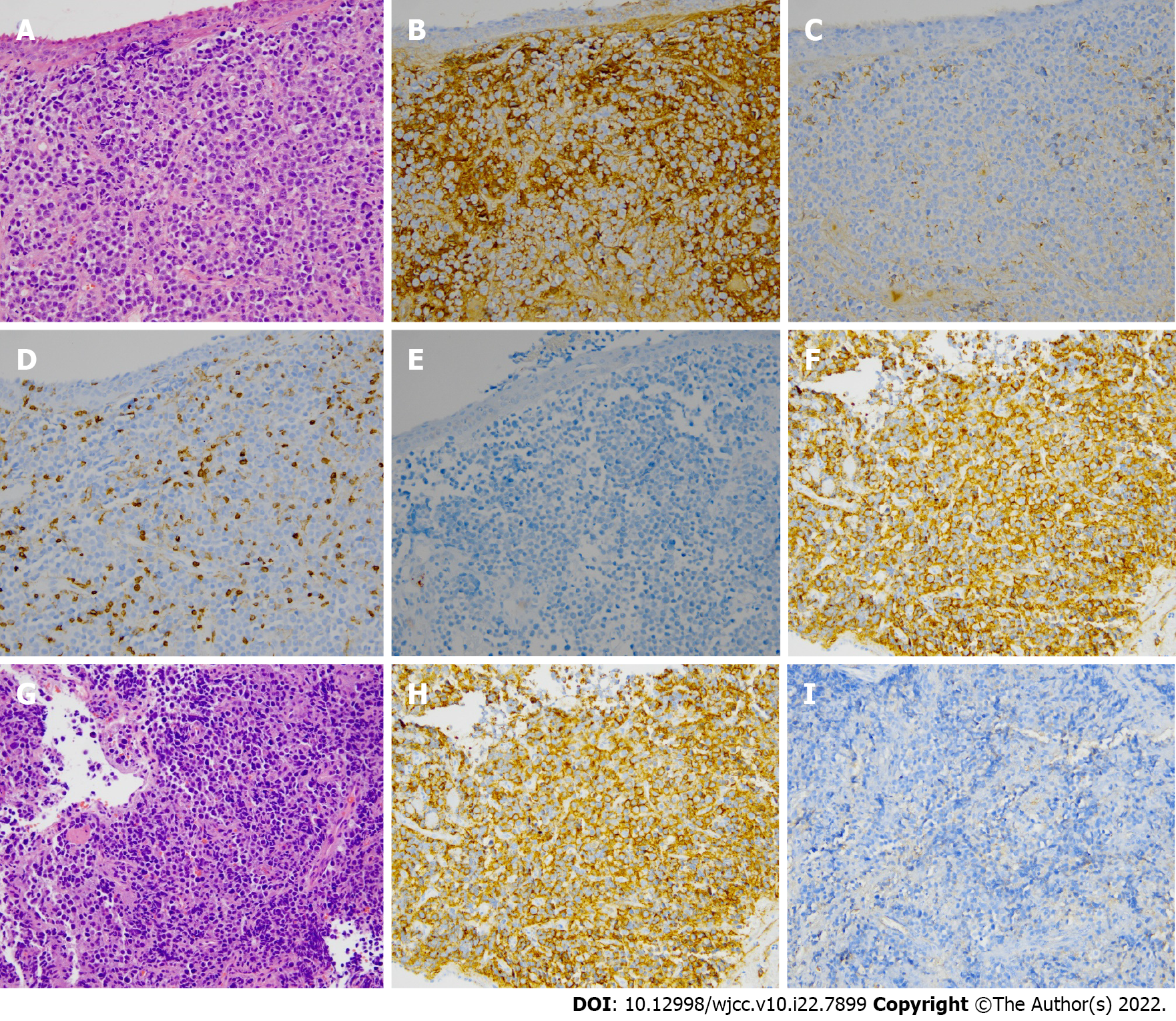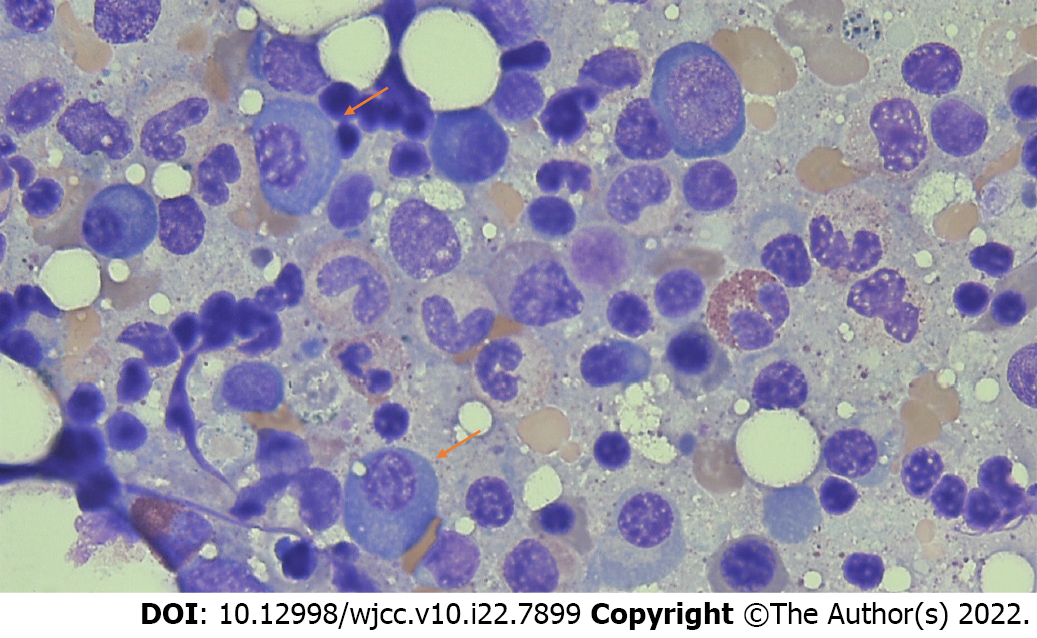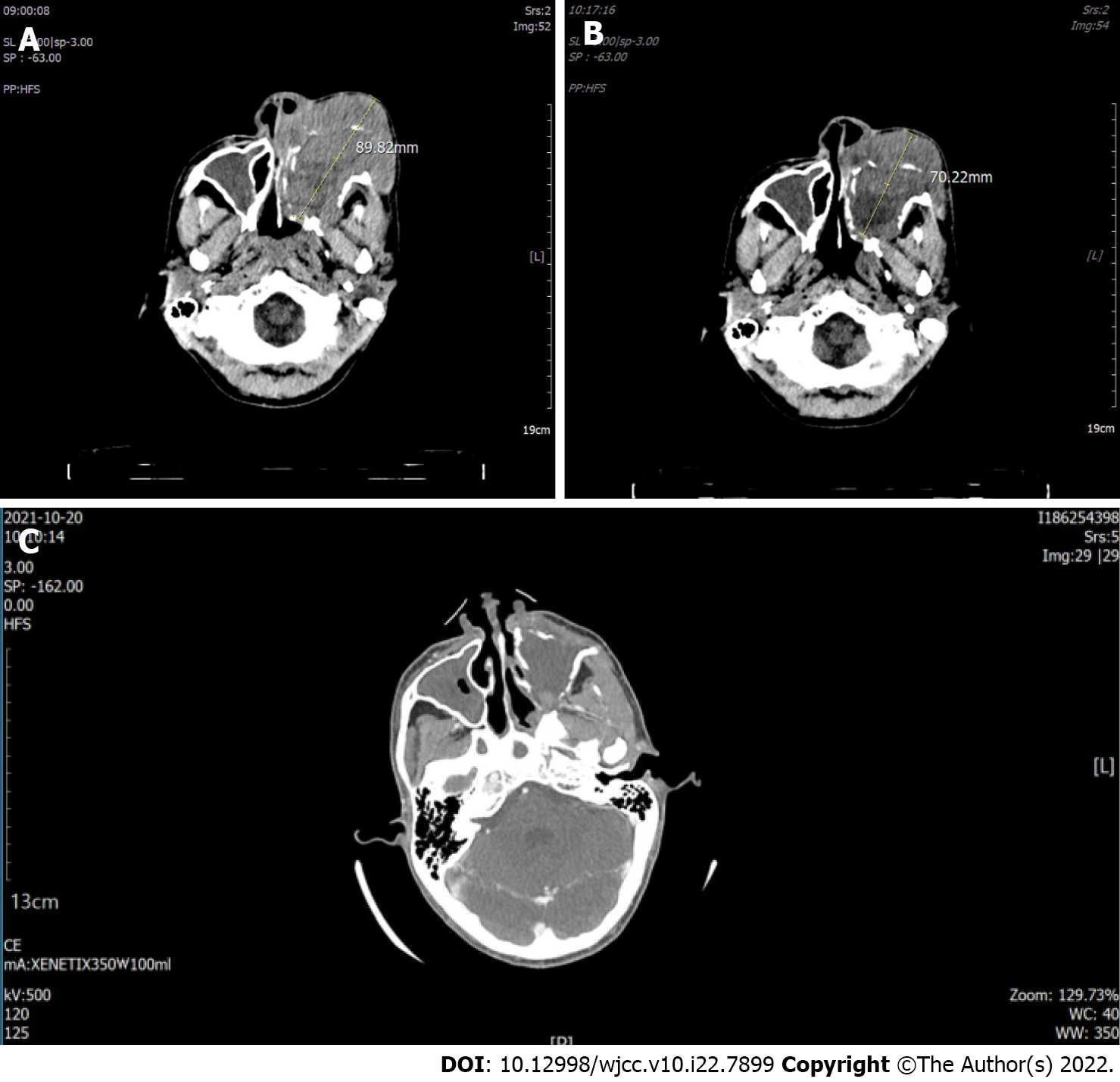Copyright
©The Author(s) 2022.
World J Clin Cases. Aug 6, 2022; 10(22): 7899-7905
Published online Aug 6, 2022. doi: 10.12998/wjcc.v10.i22.7899
Published online Aug 6, 2022. doi: 10.12998/wjcc.v10.i22.7899
Figure 1 Imaging at admission.
A: Contrast-enhanced neck computed tomography shows a bulky mass in the left maxillary sinus extending to the orbit, nasal cavity, ethmoid sinus, infratemporal fossa, and pterygopalatine fossa; bone destruction extends to the nasal cavity; B: Contrast-enhanced chest computed tomography shows an enhanced nodule approximately 0.8 cm in size in the left main bronchus; C-E: 18F-fluorodeoxyglucose positron emission/computed tomography shows a large expansile hypermetabolic mass in the left maxillary sinus and hypermetabolic focal activity in the nasopharynx, multiple metastatic lymphadenopathies in both cervical and left supraclavicular areas, and multiple osseous metastases. There is a focal hypermetabolic nodular lesion in the left main bronchus; F and G: Bronchoscopy shows a 1.0-cm sized nodular lesion with pedicles arising from the anterior wall of the left main bronchus.
Figure 2 Microscopic examination of the specimen using hematoxylin and eosin staining and immunohistochemistry staining.
A-F: In the bronchus, plasmacytoid large atypical cells are densely infiltered beneath the surface epithelium. These cells are immunoreactive for kappa-light chain (B) and CD138 (F) but not for lambda-light chain (C), CD3 (D), and CD20 (E); G-I: The lesion in the nasal cavity also shows densely packed plasmacytoid cells and is positive for kappa-light chain (H) and negative for lambda light chain (I).
Figure 3 Bone marrow biopsy.
Plasma cells are present in the biopsy. Arrow: Plasma cell.
Figure 4 Imaging after radiotherapy.
A: Before radiotherapy; B: During radiotherapy; and C: After completion of radiotherapy, bulky mass of the left maxillary sinus decreased after radiotherapy.
- Citation: Lee SB, Park CY, Lee HJ, Hong R, Kim WS, Park SG. Non-secretory multiple myeloma expressed as multiple extramedullary plasmacytoma with an endobronchial lesion mimicking metastatic cancer: A case report. World J Clin Cases 2022; 10(22): 7899-7905
- URL: https://www.wjgnet.com/2307-8960/full/v10/i22/7899.htm
- DOI: https://dx.doi.org/10.12998/wjcc.v10.i22.7899












